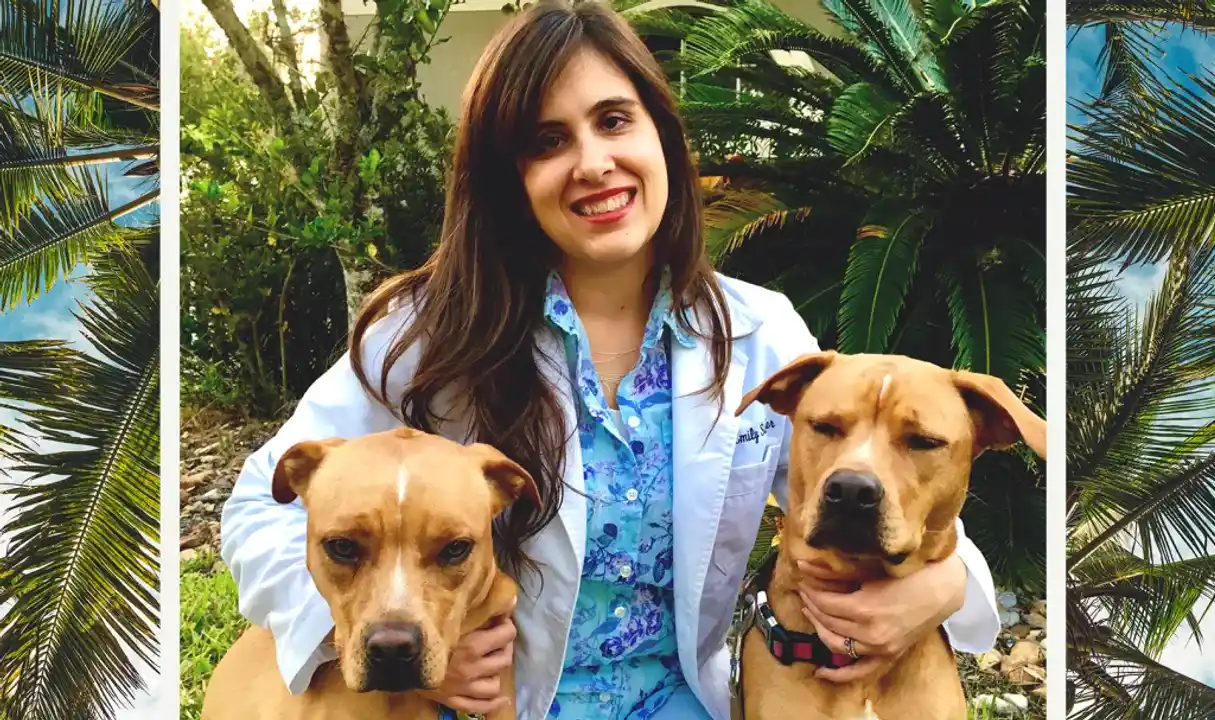When less is more: Reflections on FAS, burnout, and self-care


The other day when I was working a relief shift, I had several patients in a row that were showing significant signs of fear, anxiety and stress (FAS) during their visits.
In past years I might have called these animals “aggressive” or “bad,” but certainly since my Fear Free training I have learned to identify the underlying cause for their behavior. The technicians with whom I was working that given day tried to do what I also might have done years ago: apply a heavier amount of force and restraint, and in one case yell “No!” at the patient. One tech offered to hold a dog down on her side when the patient struggled with our attempted blood draw.
In each case my reaction was the same: I asked the tech to stop what they were doing and lessen their restraint on the patient and allow the patient to relax. I named the FAS as such. And I came up with a new plan.
In one case, we went back into the exam room with the owner and had the owner give treats while we finished what we were trying to do. In at least one other case we planned to have the patient come back another day with some medication on board to lower the patient’s anxiety level.
When notating these patients’ behavior in their medical record, I often use terminology like “go slow.” When requesting that a technician use a lighter level of restraint, I will often describe the patient as a “less is more” patient.
Less is more as a Fear Free technique
During one of these encounters on the day in question, we discontinued our attempts to get blood from a dog after she did not respond to treats being offered by her owner. The owner offered to hold her for me in an effort to try to get the blood drawn and avoid having to bring the patient back another day.
Besides the obvious liability concern regarding an owner restraining a nervous patient for a procedure she resents, I explained to the owner that we would not be trying again that day because I did not want to increase his pet’s stress levels even more and risk worsening her fear and anxiety associated with coming into the clinic.
I repeated to the owner what I had just said to the technician when we were outside of the exam room: that just because we could do something didn’t mean that we should.
Want more clinical & industry news from IndeVets? Sign up here.
Less is more as a tenet of self-care
I found that I had to remind myself of that same lesson under different circumstances. I had had a relief shift for a particular day canceled by the hospital for reasons unknown to me. When I first found out about the cancelation, my initial thought was to try to schedule a new shift with a different hospital right away.
There was no shortage of shifts available to choose from on that given today (which is the day in which I am now writing this, by the way). One of the available shifts was one from a hospital which was close to my home, where I had worked before, and where I knew they were desperately in need of help.
It was a hospital I was comfortable working in, and they were willing to be flexible with my hours based on what worked best for me. Taking the shift would be financially beneficial for me as well. But for some reason, I felt a pull to hold off on scheduling anything.
As I tried to ponder why I had this feeling, I reflected on the possible reasons.
I was traveling out of state with my 4 children the week before, including a toddler and a baby. Without a doubt I would be exhausted after the trip. I was already scheduled to work four shifts during the week in question, three of which were at hospitals I knew to be very busy. So I would come home exhausted.
I needed the extra day to rest. But the guilt over not helping the hospital that needed me kept creeping in. The hospital even reached out to ask if I was going to schedule a shift. This made the people pleaser inside of me squirm with discomfort.
I was capable of working the shift. I would get through it. It would be beneficial to my family financially and to the hospital as well, and I would feel a sense of accomplishment from working hard and making everyone happy. But I needed the break.
I knew it. This was a case where less was more for me and for my family. Instead of working the shift, I spent extra time with my youngest kids, helped my bigger kids through the end of their first week of school, had lunch with a friend (kidless!!), and wrote this blog that’s been kicking around in my head.
Just because I could have powered through and done the shift, doesn’t mean it was the right thing for me and my family at this given time.
Read more: 5 hacks to decrease your stress in 10 minutes or less
Veterinarian burnout and self-care
As we as veterinarians work our way through difficult moments of being understaffed, overbooked and criticized for not doing enough, it can be hard to step back and prioritize our physical and mental wellbeing. But we are the only ones capable of prioritizing those things for ourselves.
As hard as it is to do, and as much as it goes against what we have often thought of as being the attributes that help us succeed in veterinary medicine, we must sometimes decide that just because we could see another patient, answer a veterinary question when we are spending time with our families, or whatever other sacrifice we are asked to make, doesn’t always mean that’s what we should do.
Sometimes it may be fine to do these things if we feel inspired to, but we should not make ourselves feel that we must do so at the expense of our own physical and mental health and/or time with our families. We, too, must be able to recognize when less really is more in our own lives.
Emily Singler, VMD is an Associate IndeVet practicing in Florida. Check out her blog at www.vetmedbaby.com.
More from IndeVets:
Results of the 2021 Covid-19 veterinary impact survey and what they mean for animal hospitals
Thinking sustainably in vet med: 3 tactics and 3 unexpected advantages
